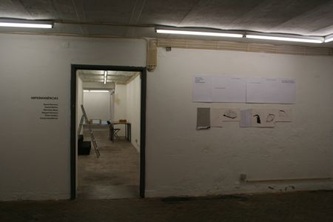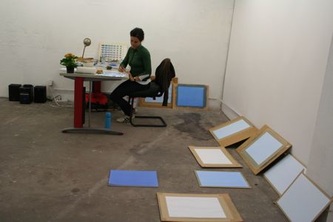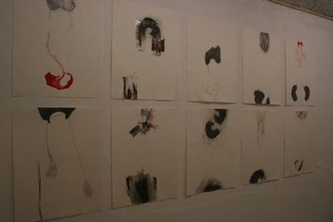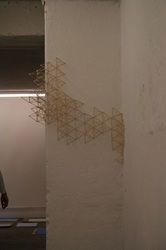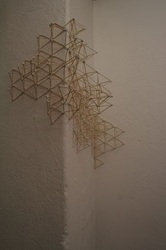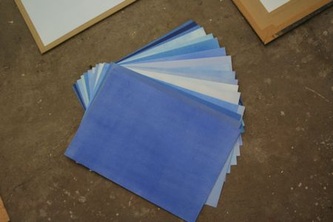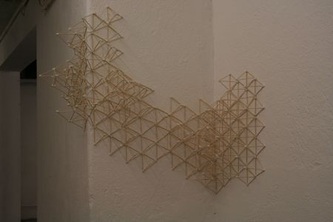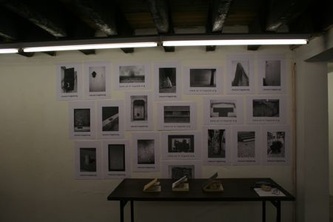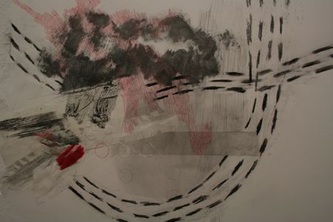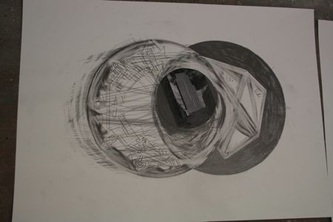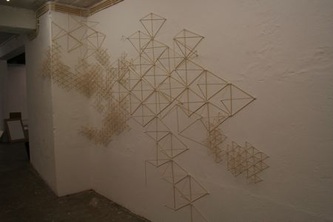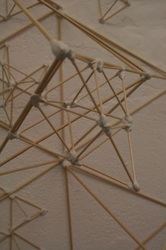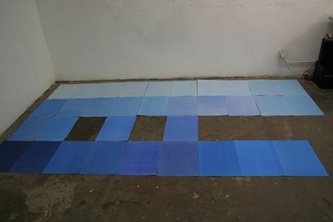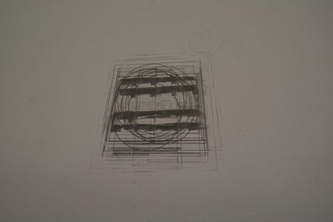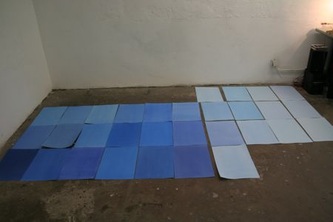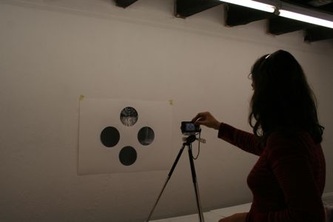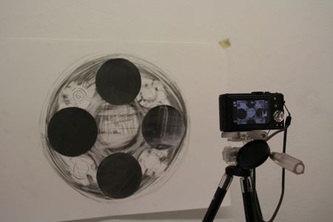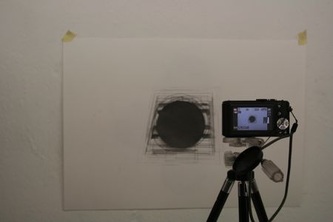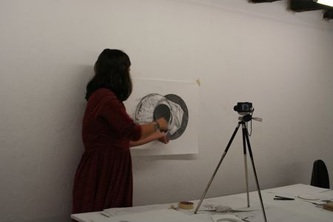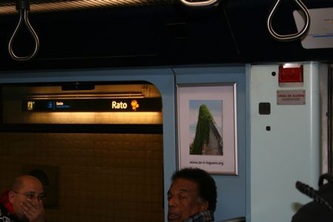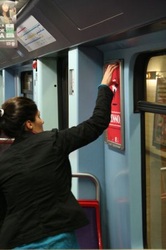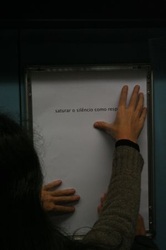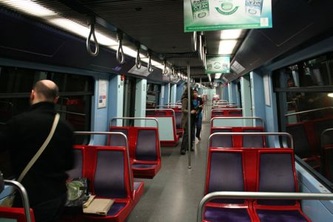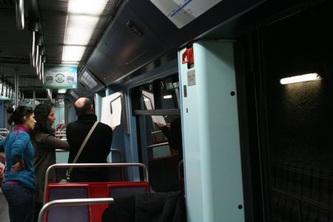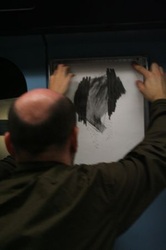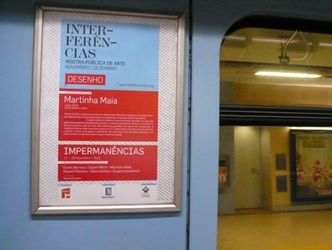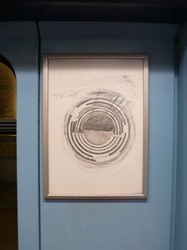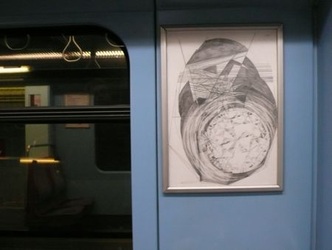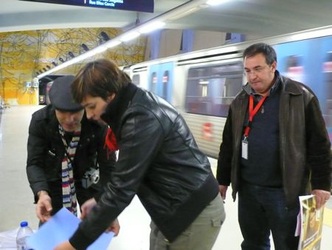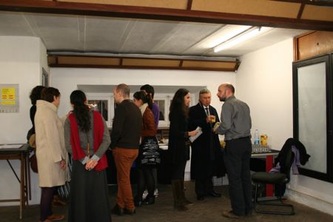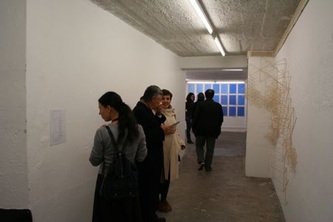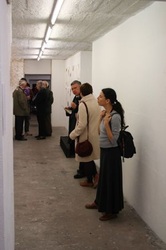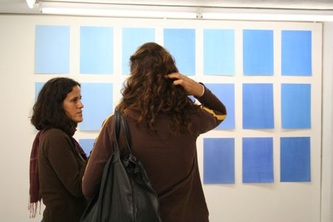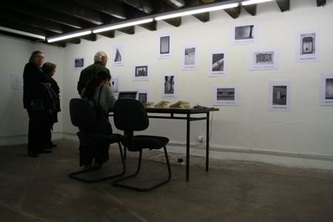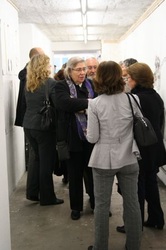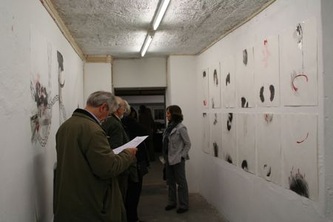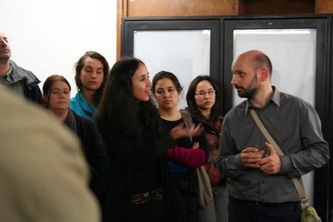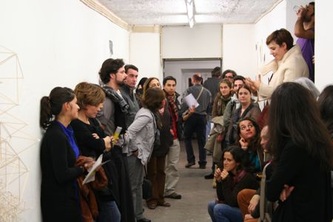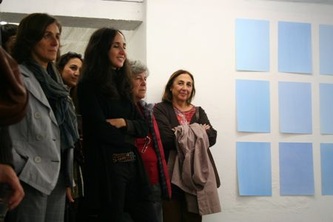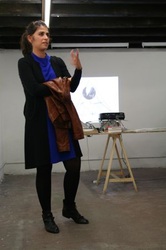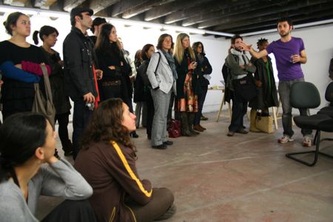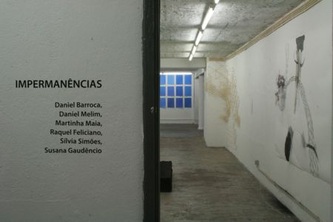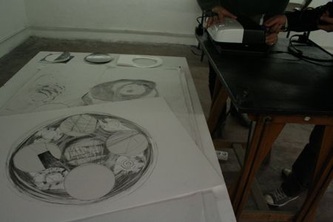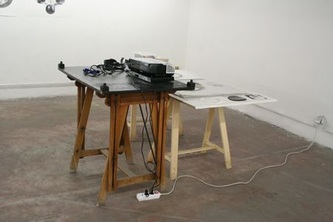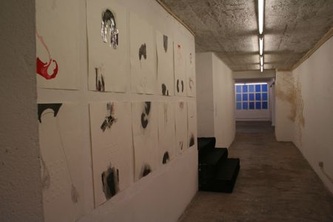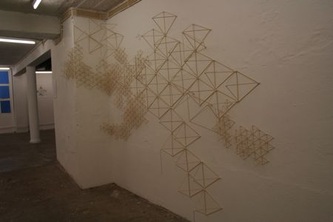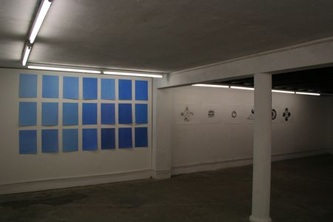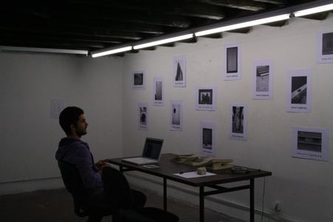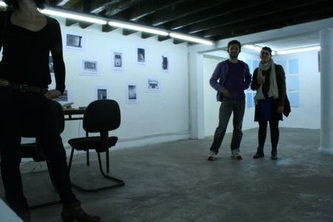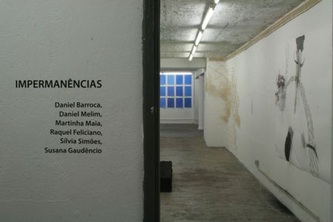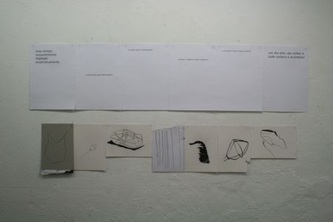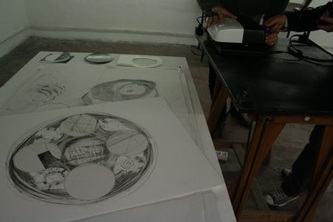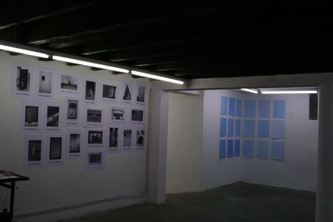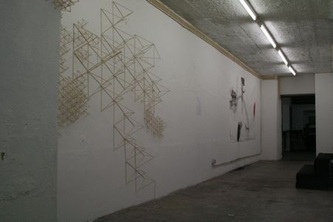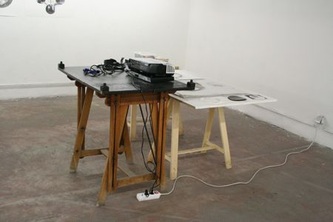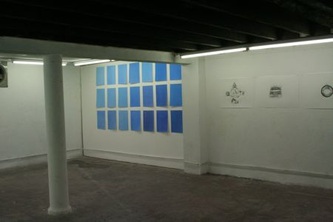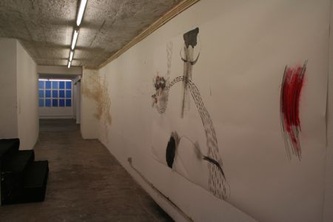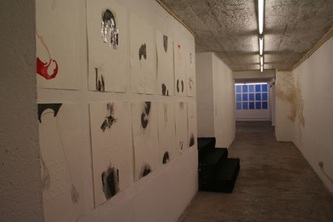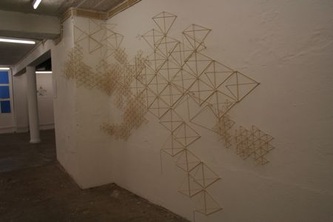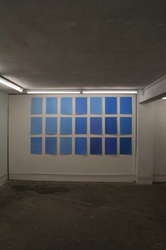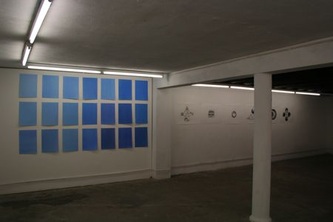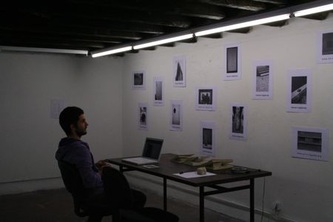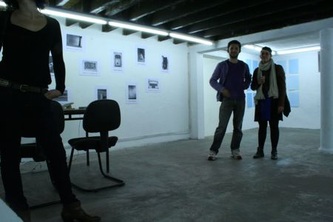Impermanences – Festival Interferences / Metro Exhibition
Daniel Barroca, Daniel Melim, Martinha Maia, Raquel Feliciano, Sílvia Simões, Susana Gaudêncio
November 2010
IMPERMANENCES is a project in partnership with FESTIVAL INTERFERÊNCIAS taking place in two distinct times and spaces: an artistic residency/exhibtion, open to the public, taking place at Drawing Spaces (Fábrica Braço de Prata), between November 3 and 20, from Wednesday to Sunday, from 7pm to 11 pm, with an opening presentation on November 13 at 9.30pm; and a drawing exhibition in 6 carriages of the Lisbon Metro which will be transformed into galleries displaying 6 individual exhibitions, between November 13 and 26, during the Metro’s normal operating hours. The participating artists are: Daniel Barroca, Daniel Melim, Martinha Maia, Raquel Feliciano, Sílvia Simões and Susana Gaudêncio.
In Le Plaisir au dessin Jean Luc Nancy argues that drawing is “opening of form” and holds two dimensions: ‘one in which drawing is more evocative of the drawn gesture than of the drawn figure; and another, deriving from the former, which relates to a non-totalization of form’. The presence of these dimensions in drawing is perhaps more immediately identifiable for its economy of means which entails a certain frailty; a frailty which, in its turn, reveals drawing as materialization of the “drawn gesture”, of the possibility of gesture, of an action or movement. It is within this approach to drawing as evidence of a productivity, of a specific doing, i.e., of a manner of doing, that the project IMPERMANENCES presents drawing as a proposal of a space and/or state (time) of speculation on ways of doing which entail a certain resistance to the ‘totalization of form’. The observer is thus invited to look at the drawings in this open space-time relation where those ‘ways of doing’ invite the observer to greater intimacy and where that space-time relation becomes a place of mutual presence.
One the one hand, during the residencies each artist will be negotiating and materializing the evidence of that productivity in the course of his/her work, identifying and revealing gestures that speculate possible states or forms, ways of thinking that expose specific ways of doing. On the other hand, in the Metro carriages converted into galleries, the impermanence issue becomes even clearer insofar as the exhibition space is a moving place of circulation in which there is physical and temporal movement of the space and of the works but also in which the observer, coming first as a traveler, finds the drawings by chance and in that confrontation becomes open to an atypical moving relation, characterized by several states of impermanence. The Metro carriages, which are not institutionally assumed as exhibition places but as places of circulation rather than contemplation, but where this confrontation is nevertheless proposed; a permanent state of itinerancy of the exhibition space and of the works themselves which renders them as a “moving” presence; the transformed space inside the carriage-gallery where drawings establish or make possible those atypical encounters with travelers, within the limits of their own circulation times and spaces.
Daniel Barroca proposes short texts that confront the ‘observer who does expect to meet the work at the tube carriage but finds it by chance’; Daniel Melim proposes a fictitious collective exhibition through a series of posters that ‘awake the attention to certain urban details conferring them an aesthetic but also critical potential’; Martinha Maia insists on the use of ‘matter for imprinting and repeating a gesture in the drawing as a first form of conscience’; Raquel Feliciano proposes a set of water-colors inspired on the cyanometer (a device invented in the eighteenth century by De Sassurre to measure the degree of blueness of the sky) drawing a spectrum of the blue of the sky or – as the artist puts it – of the ‘infinite air’; bringing to the fore a problem concerning the concept ‘impermanences’ versus ‘permanences’, Sílvia Simões uses concepts such as ‘resistance’, ‘appearance’, ‘transference’, ‘incongruence’, ‘persistence’ and ‘irreverence’ to open up her work to a field of ‘expansions, echoes and contaminations that deflect the time of arrival in which the result is only exhausted in the time of execution’; Susana Gaudêncio maps a set of utopist thoughts in a work entitled Câmara de invenções (Chamber of inventions) proposing to establish an ‘analogy with the imagined process of new utopias through a method of accumulation, overlapping and alteration of information’.
Teresa Carneiro
FESTIVAL INTERFERÊNCIAS
Starting in November, the city of Lisbon receives the first edition of INTERFERÊNCIAS – Mostra Pública de Arte (INTERFERENCES – Public Display of Art), an intromission in the daily lives of the population, aiming at bringing contemporary art to the greater public, through the appropriation of public spaces / “non-places” and means of mass communication. Therefore, the event is generalist, free and massive.
The initiative involves public transports and Metro stations, mupis and outdoors. The second edition will engage shopping malls, parking areas and newspaper pages.
Further to the video-art display in the MOP TV (Lisbon Metro) television circuit, the festival includes a vast number of artistic interventions, namely a large collective exhibition of visual arts (photography and drawing) displayed in outdoors and mupis, by some of the most highly regarded plastic artists and with the collaboration of Teresa Carneiro (Drawing Spaces – Fábrica Braço de Prata) and Valter Vinagre (Kameraphoto – http://www.kameraphoto.com/). There will also be an exhibition of illustration in the Municipality of Lisbon, in co-production with the online digital Magnética Magazine.
INTERFERÊNCIAS is an initiative of Associação Número – Arte e Cultura and has the support of the Municipality of Lisbon, Lisbon Metro, Multimédia Outdoors Portugal, Lusíada University, BES Arte & Finança, EPSON, Pampero, Magnética Magazine, Don’t Panic, Drawing Spaces and Kameraphoto.
www.interferencias.org
www.28comunicacao.com
In Le Plaisir au dessin Jean Luc Nancy argues that drawing is “opening of form” and holds two dimensions: ‘one in which drawing is more evocative of the drawn gesture than of the drawn figure; and another, deriving from the former, which relates to a non-totalization of form’. The presence of these dimensions in drawing is perhaps more immediately identifiable for its economy of means which entails a certain frailty; a frailty which, in its turn, reveals drawing as materialization of the “drawn gesture”, of the possibility of gesture, of an action or movement. It is within this approach to drawing as evidence of a productivity, of a specific doing, i.e., of a manner of doing, that the project IMPERMANENCES presents drawing as a proposal of a space and/or state (time) of speculation on ways of doing which entail a certain resistance to the ‘totalization of form’. The observer is thus invited to look at the drawings in this open space-time relation where those ‘ways of doing’ invite the observer to greater intimacy and where that space-time relation becomes a place of mutual presence.
One the one hand, during the residencies each artist will be negotiating and materializing the evidence of that productivity in the course of his/her work, identifying and revealing gestures that speculate possible states or forms, ways of thinking that expose specific ways of doing. On the other hand, in the Metro carriages converted into galleries, the impermanence issue becomes even clearer insofar as the exhibition space is a moving place of circulation in which there is physical and temporal movement of the space and of the works but also in which the observer, coming first as a traveler, finds the drawings by chance and in that confrontation becomes open to an atypical moving relation, characterized by several states of impermanence. The Metro carriages, which are not institutionally assumed as exhibition places but as places of circulation rather than contemplation, but where this confrontation is nevertheless proposed; a permanent state of itinerancy of the exhibition space and of the works themselves which renders them as a “moving” presence; the transformed space inside the carriage-gallery where drawings establish or make possible those atypical encounters with travelers, within the limits of their own circulation times and spaces.
Daniel Barroca proposes short texts that confront the ‘observer who does expect to meet the work at the tube carriage but finds it by chance’; Daniel Melim proposes a fictitious collective exhibition through a series of posters that ‘awake the attention to certain urban details conferring them an aesthetic but also critical potential’; Martinha Maia insists on the use of ‘matter for imprinting and repeating a gesture in the drawing as a first form of conscience’; Raquel Feliciano proposes a set of water-colors inspired on the cyanometer (a device invented in the eighteenth century by De Sassurre to measure the degree of blueness of the sky) drawing a spectrum of the blue of the sky or – as the artist puts it – of the ‘infinite air’; bringing to the fore a problem concerning the concept ‘impermanences’ versus ‘permanences’, Sílvia Simões uses concepts such as ‘resistance’, ‘appearance’, ‘transference’, ‘incongruence’, ‘persistence’ and ‘irreverence’ to open up her work to a field of ‘expansions, echoes and contaminations that deflect the time of arrival in which the result is only exhausted in the time of execution’; Susana Gaudêncio maps a set of utopist thoughts in a work entitled Câmara de invenções (Chamber of inventions) proposing to establish an ‘analogy with the imagined process of new utopias through a method of accumulation, overlapping and alteration of information’.
Teresa Carneiro
FESTIVAL INTERFERÊNCIAS
Starting in November, the city of Lisbon receives the first edition of INTERFERÊNCIAS – Mostra Pública de Arte (INTERFERENCES – Public Display of Art), an intromission in the daily lives of the population, aiming at bringing contemporary art to the greater public, through the appropriation of public spaces / “non-places” and means of mass communication. Therefore, the event is generalist, free and massive.
The initiative involves public transports and Metro stations, mupis and outdoors. The second edition will engage shopping malls, parking areas and newspaper pages.
Further to the video-art display in the MOP TV (Lisbon Metro) television circuit, the festival includes a vast number of artistic interventions, namely a large collective exhibition of visual arts (photography and drawing) displayed in outdoors and mupis, by some of the most highly regarded plastic artists and with the collaboration of Teresa Carneiro (Drawing Spaces – Fábrica Braço de Prata) and Valter Vinagre (Kameraphoto – http://www.kameraphoto.com/). There will also be an exhibition of illustration in the Municipality of Lisbon, in co-production with the online digital Magnética Magazine.
INTERFERÊNCIAS is an initiative of Associação Número – Arte e Cultura and has the support of the Municipality of Lisbon, Lisbon Metro, Multimédia Outdoors Portugal, Lusíada University, BES Arte & Finança, EPSON, Pampero, Magnética Magazine, Don’t Panic, Drawing Spaces and Kameraphoto.
www.interferencias.org
www.28comunicacao.com
